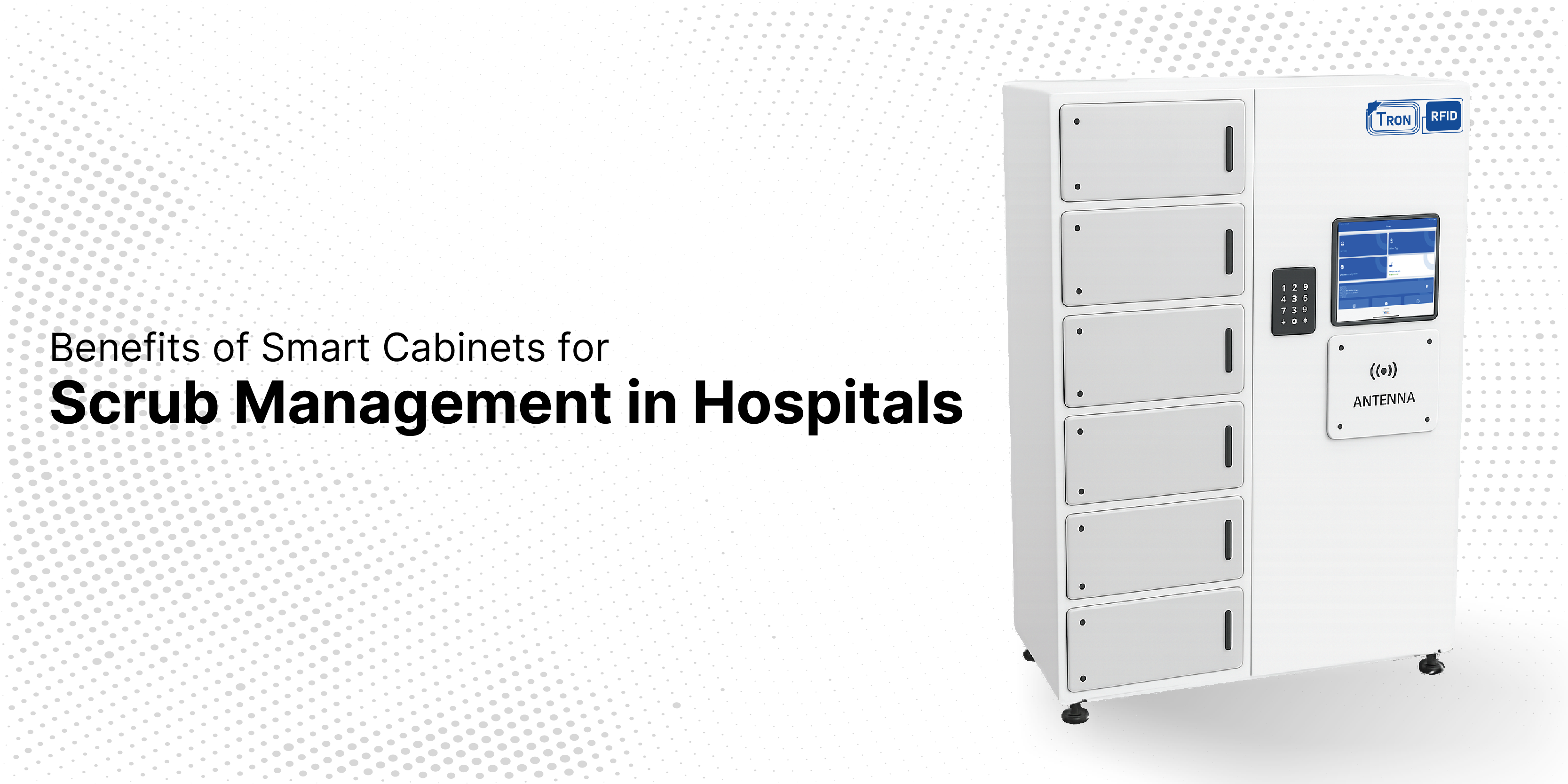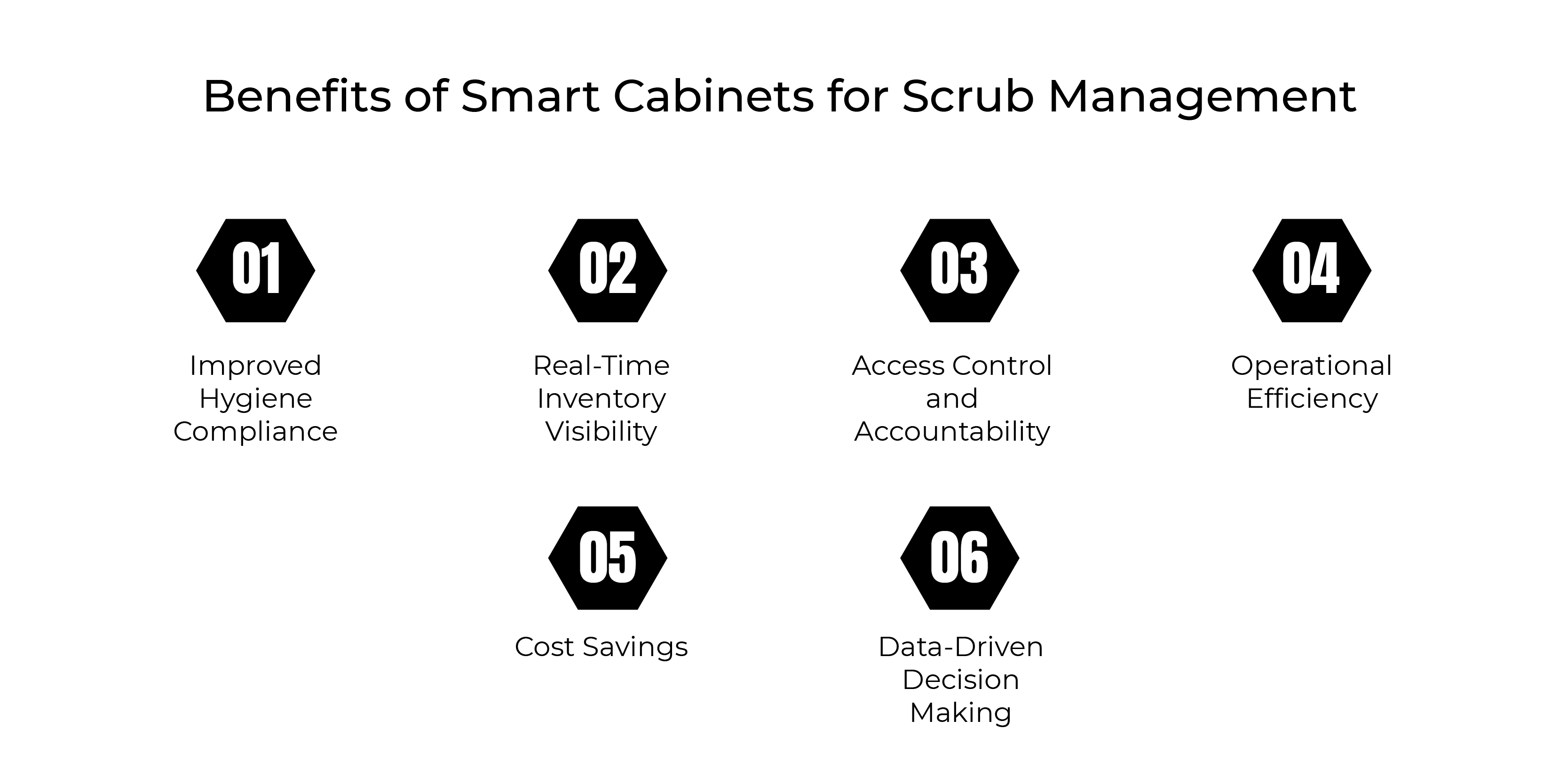The Benefits of Smart Cabinets for Scrub Management in Hospitals
Managing hospital scrubs may seem simple, but it’s a critical part of maintaining hygiene and operational efficiency. Hospitals face daily challenges like missing garments, poor tracking, and inconsistent cleanliness. These issues can lead to infection risks, wasted resources, and staff frustration.

Smart cabinet technology offers a modern solution. By automating scrub distribution and tracking, hospitals can improve hygiene, reduce waste, and ensure accountability—all while saving time and money.
Understanding Scrub Management in Healthcare Settings
Scrubs are more than just uniforms—they’re a frontline defense against infection. Staff must wear clean scrubs and return them after use, but traditional systems often fall short.
Scrubs play a vital role in infection control, but managing them effectively remains a challenge in many hospitals. Traditional systems often suffer from issues like overstocking, understocking, manual tracking errors, and unauthorized access. Without proper accountability, it’s difficult to ensure clean garments are used and returned as required. These gaps not only compromise hygiene standards but also lead to operational inefficiencies and increased costs for healthcare facilities.
These gaps can compromise hygiene standards and increase operational costs.
What Are Smart Cabinets?
Smart cabinets are automated storage units designed to manage scrub inventory efficiently. They combine hardware and software to streamline access, tracking, and reporting.
Key features include:
- RFID-enabled compartments: Each scrub set is tagged for automatic identification.
- Touchscreen interfaces: Staff can check availability and access scrubs quickly.
- Real-time inventory tracking: Administrators see live data on usage and stock levels.
- Secure access control: Entry via staff badge, fingerprint, or other authentication.
- System integration: Connects with hospital scheduling and electronic medical records (EMR) for smarter coordination.
Scrub Receiving Unit
The Scrub Receiving Unit is an automated, RFID-enabled collection system for hospital scrubs. Users simply deposit garments into the trapdoor, and the machine automatically scans and registers each item. With a capacity of 150-300 garments, this system eliminates manual counting, reduces labor costs, minimizes human error, and ensures efficient inventory management.
Key Benefits of Smart Cabinets for Scrub Management

Improved Hygiene Compliance
Smart cabinets dispense only clean, sterilized scrubs and track each garment’s usage and return. This ensures staff wear hygienic attire, reduces contamination risks, and supports strict infection control protocols across departments.
Real-Time Inventory Visibility
Hospital administrators can monitor scrub stock levels instantly through a centralized dashboard. The system provides alerts for low inventory or unusual usage, helping teams respond quickly and maintain consistent availability without manual checks.
Access Control and Accountability
Each scrub transaction is recorded with user identity and timestamp, ensuring full traceability. This discourages unauthorized access, promotes responsible usage, and helps enforce hospital policies regarding garment handling and hygiene compliance.
Operational Efficiency
Smart cabinets eliminate the need for staff to search for scrubs or request them manually. Automated dispensing and restocking streamline workflows, saving time and allowing clinical teams to focus more on patient care.
Cost Savings
By tracking usage and preventing overstocking or loss, smart cabinets help hospitals reduce unnecessary purchases and laundry expenses. This leads to better budget control and longer garment lifecycles through optimized inventory management.
Data-Driven Decision Making
Usage analytics from smart cabinets provide insights into scrub demand, staff behavior, and operational trends. Hospitals can use this data to improve staffing plans, control costs, and meet compliance standards with documented evidence.
Use Case Examples
Smart cabinets have shown practical benefits in hospital environments. In general care settings, they help reduce scrub loss and improve garment tracking. Emergency departments benefit from quicker access to clean scrubs during shift changes, enhancing staff readiness. In operating rooms, sterile garments are consistently available, supporting smoother surgical preparation and minimizing delays in critical procedures.
Future Trends in Scrub Management
Smart cabinet technology continues to evolve, bringing new possibilities to hospital scrub management. Future innovations include AI-powered restocking that predicts demand based on staff schedules and usage trends, ensuring optimal inventory levels. Integration with wearable tech like smart badges or sensors will enhance hygiene compliance tracking. Additionally, sustainability features such as eco-friendly scrub recycling and waste reduction initiatives will support greener healthcare operations while maintaining high standards of cleanliness and efficiency.
Conclusion
Smart cabinets present a practical and forward-thinking solution for hospitals aiming to streamline scrub management. By enhancing hygiene standards, improving operational workflows, and reducing unnecessary costs, they support both patient safety and staff efficiency. Their ability to track usage, control access, and provide real-time data makes them a valuable asset for modern healthcare environments focused on accountability and continuous improvement. Evaluating smart cabinet systems can be a strategic step toward smarter hospital operations.
Recent Posts
-
How Smart Cabinets are Revolutionizing Surgical Inventory
Hospitals face constant challenges in managing surgical inventory. From stockouts that delay critica …Dec 1st 2025 -
RFID Software vs Manual Tracking — Cost and Accuracy Compared
Inventory and asset tracking are the backbone of efficient operations in logistics, retail, and manu …Nov 28th 2025 -
RFID Anti-Theft Tags—How They Work and Why You Need Them
In today’s fast-paced retail environment, protecting merchandise while maintaining efficiency is a c …Nov 24th 2025




